History Short – 50 and Not Out





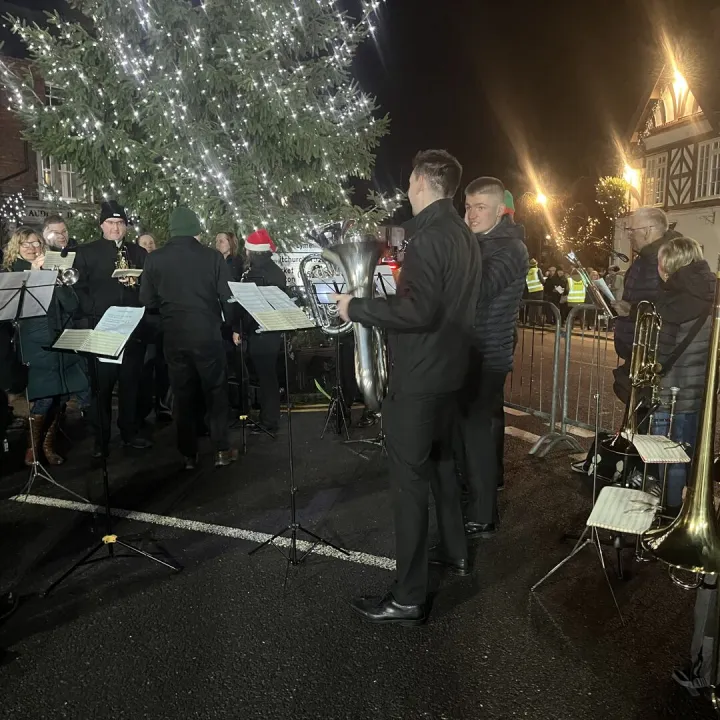

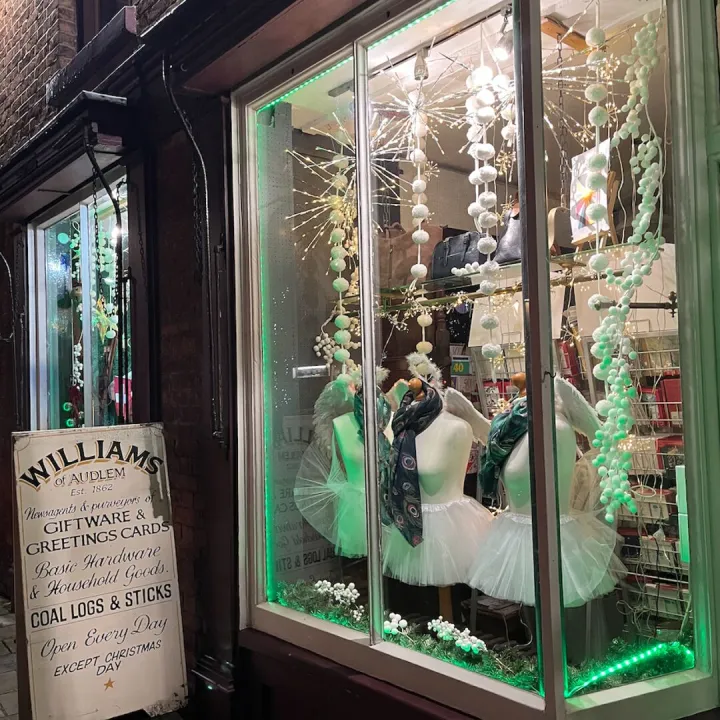
Foreword:-
History Short 50 attached. It's a landmark in the series which, when it was first launched almost exactly a year ago, none of us imagined would still be running.
At the time, we thought a handful of articles would help keep the History Society going until we resumed normal activities in September.
We thanked ADHS members for their support in the weekly direct mailing. However, several of the articles have been contributed by non-members whose contact with History Shorts is through AoL's involvement. We must also thank them too.
Things have not turned out as we expected, back in March 2020. But, thanks to all our contributors, the History Shorts series has kept going and has reached the half century. Thanks also to AudlemOnline for taking the articles to a wider audience.
Audlem and District History Society – History Shorts 50 by Jeremy Nicholls
Audlem and the railway
The early years
OS 25” map (1909) reproduced with the permission of the National Library of Scotland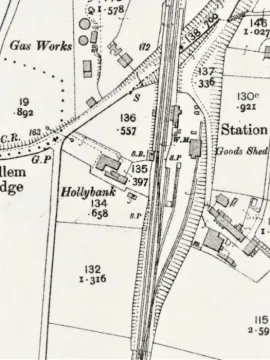
The first passenger trains called at Audlem station on 19 October 1863 with the opening of the Nantwich and Market Drayton Railway (N&MDR). Four years later, the railway opened between Market Drayton and Wellington. The Great Western Railway (GWR) had taken control of the Wellington and Drayton Railway before it had even been completed. So, from 16 October 1867, Audlem ceased to be just a stop on a branch line from Nantwich and found itself on what the GWR intended to be its main line from the West Midlands to Manchester. In the event, the GWR's ambitions stalled at Nantwich and it had to negotiate access over the tracks of the London and North Western Railway to get its trains to Crewe and onwards to Manchester.
The N&MDR opened as a single-track line but, by July 1867, a second track had been laid. The map shows Audlem station layout in its final form. The station approach left Whitchurch Road at roughly the present entrance to Heywood's Ridge and led up to the main station building on the up (for Market Drayton/Wellington) platform. On the down platform (for Nantwich/Crewe) there was a small waiting room. A signal box (SB on the map) was demolished in the 1950s.
click https://maps.nls.uk/index.html for more information on the map source
The station buildings

Audlem station in about 1900 with the station master, fourth from right, in a frock coat. His staff would have included signalmen, a booking office clerk, goods agent and porters. The double doors, partly ajar, led into the booking hall. Beyond was the waiting room door. The door immediately behind the men was possibly to the lamp store. Platform lighting and signals all required oil lamps.
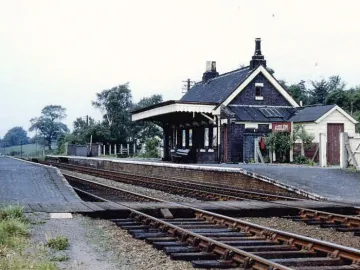
.
.
.
Note the tall masts for the oil lamps on the down platform. The hanging brackets could be lowered for the lamps to be refuelled, using a pulley system. In summer, as here, the lamps weren't needed and would be put in store.
The station in 1963, just a few months before closure. It's looking a bit down-at-heel. Enlarge the picture and please let me know if you can identify the woman who is presumably waiting for a train to Coole Pilate, Nantwich or Crewe.
Passengers and porters with parcels and mail trolleys had to use the foot crossing – made of wooden sleepers – to cross to the down platform. The mail and daily national newspapers, printed in Manchester, arrived by the early morning passenger train from Crewe. The signal box had been located where the photographer was standing.
The goods yard
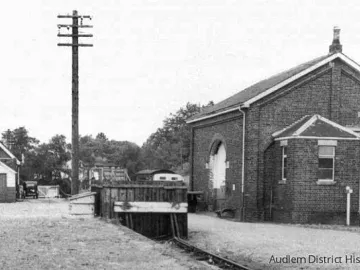
There were three sidings. A long siding led up to the goods shed, where large items were transhipped from railway wagon to road vehicle. (A British Railways open-back lorry is parked next to the shed.) The shed contained a crane – now in front of the Shroppie Fly – and was a secure store. The buffers to the second siding are nearest the camera.
The gasworks and local coal merchant received deliveries by rail and would have been required to use the weighbridge (WM on the map). A third siding, to the left of the photo, served a cattle dock with pens, where livestock could be loaded on and off railway wagons.
Records from the 1860s onwards show a wide range of goods coming into Audlem, including coal, lime, building materials, agricultural machinery, animal feed, bonemeal, flour, potatoes and barrels of beer. Williams' shop received consignments of cloth, haberdashery, clothing and many other items. Far fewer goods were sent out: they included livestock, cheeses, hay and, every September, wagonloads of damsons to cloth dyers in Tameside.
The goods shed and yard after closure.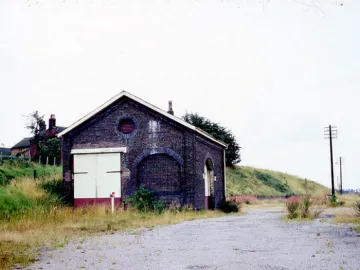
In the 1950s and 1960s, cattle food arrived from Silcocks in Warrington and wet beet pulp from the Allscott sugar beet factory near Wellington.
Possibly the most unusual event to happen at Audlem station occurred in the late 1940s, when the Wood family, farmers from Westmorland, bought Hankelow Manor and transferred all their livestock and equipment by rail to Audlem station. The animals were then herded through the village to the farm. Apparently, lessons were suspended for pupils at the primary school – then in the Cheshire Street building – so that they could watch the spectacle!
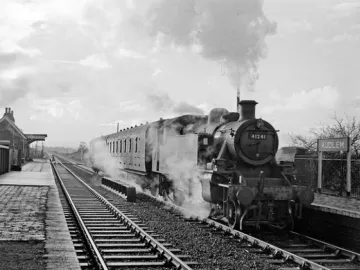
The 10.08 Wellington to Crewe train calls at Audlem on 30 December 1960. The carriages were typical of those introduced by the GWR for rural services from the 1920s onwards. They weren't very popular with passengers as they didn't have corridors or toilets: Crewe to Wellington took over an hour! The locomotive, 41241, was built at Crewe Works in 1949. It was withdrawn in 1966 but has been preserved at the Keighley and Worth Valley Railway, where it is still in regular use.
The platforms extended over the Whitchurch road and the cast iron panels of the bridge section can be clearly seen.
Passenger services between Crewe and Wellington were withdrawn from 9 September 1963, a month short of the centenary anniversary. The goods yard closed in May 1964 and the Nantwich – Wellington line closed entirely from 9 May 1967.
All photographs are from the ADHS collection except the final one (steam train), the source of which I've been unable to trace.
Get In Touch
AudlemOnline is powered by our active community.
Please send us your news and views using the button below:
Email: editor@audlem.org




